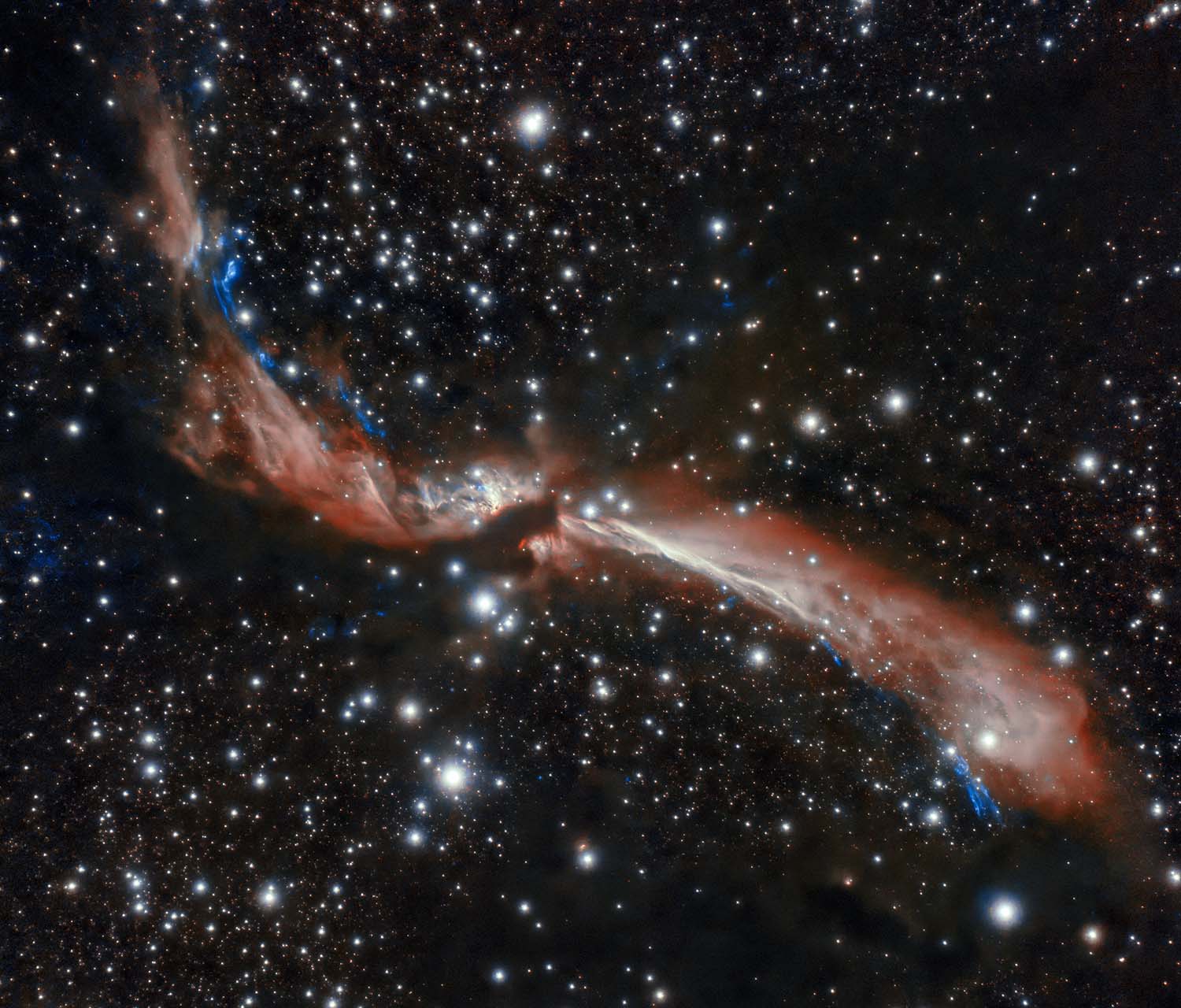NOIRLab: Sidewinding Young Stellar Jets Spied by Gemini South

Sinuous stellar jets meander lazily across a field of stars in new images captured from Chile by the international Gemini Observatory, a Program of NSF’s NOIRLab. The gently curving stellar jets are the outflow from young stars, and astronomers suspect their sidewinding appearances are caused by the gravitational attraction of companion stars. These crystal-clear observations were made using the Gemini South telescope’s adaptive optics system, which helps astronomers counteract the blurring effects of atmospheric turbulence.
Young stellar jets are a common by-product of star formation and are thought to be caused by the interplay between the magnetic fields of rotating young stars and the disks of gas surrounding them. These interactions eject twin torrents of ionized gas in opposite directions, such as those pictured in two images captured by astronomers using the Gemini South telescope on Cerro Pachón on the edge of the Chilean Andes. Gemini South is one half of the international Gemini Observatory, a Program of NSF‘s NOIRLab, that comprises twin 8.1-meter optical/infrared telescopes on two of the best observing sites on the planet. Its counterpart, Gemini North, is located near the summit of Maunakea in Hawai‘i.
The jet in the first image, named MHO 2147, is roughly 10,000 light-years from Earth, and lies in the galactic plane of the Milky Way, close to the boundary between the constellations Sagittarius and Ophiuchus. MHO 2147 snakes across a starry backdrop in the image — an appropriately serpentine appearance for an object close to Ophiuchus. Like many of the 88 modern astronomical constellations, Ophiuchus has mythological roots — in ancient Greece it represented a variety of gods and heroes grappling with a serpent. MHO 1502, the jet pictured in the second image, is located in the constellation of Vela, approximately 2000 light-years away.
Most stellar jets are straight but some can be wandering or knotted. The shape of the uneven jets is thought to be related to a characteristic of the object or objects that created them. In the case of the two bipolar jets MHO 2147 and MHO 1502, the stars which created them are obscured from view.
